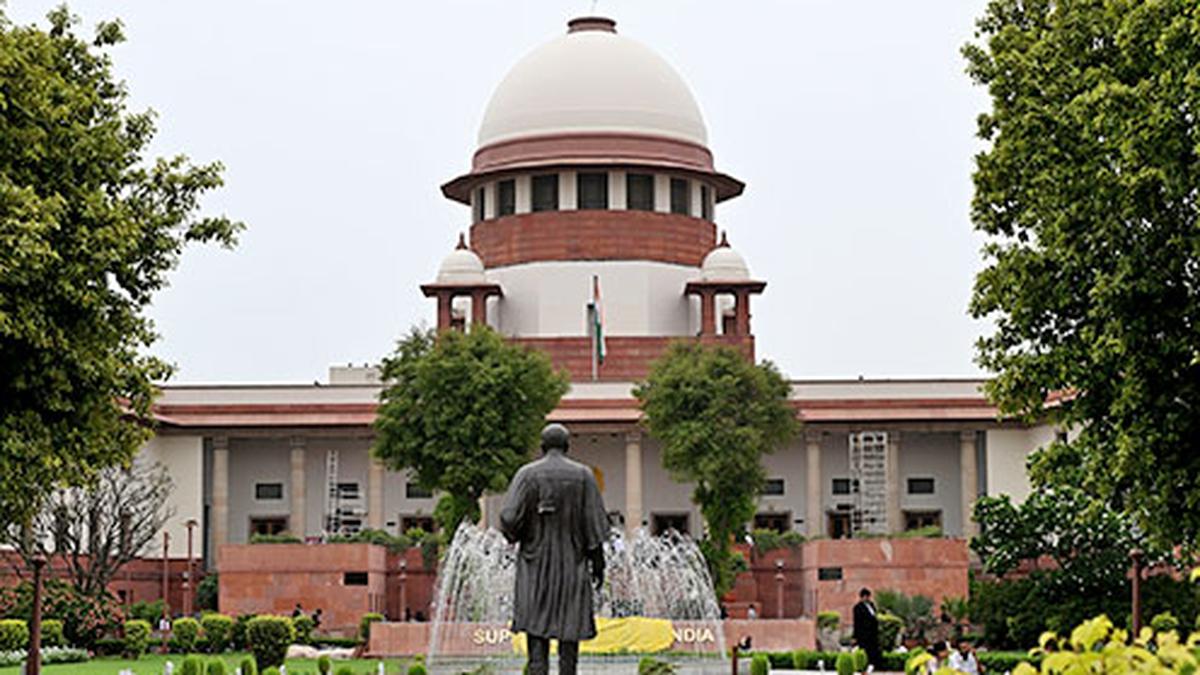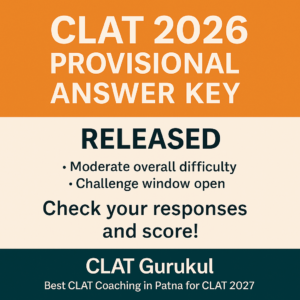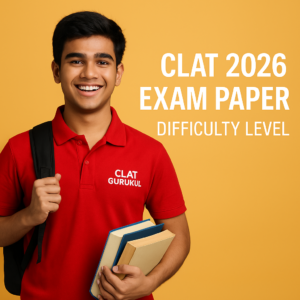
Echoes from Courtroom No. 24: The Verdict That Changed Indian Democracy
Why in News?
On June 12, 2025, India marks 50 years since the historic verdict delivered by Justice Jagmohan Lal Sinha of the Allahabad High Court, which declared Indira Gandhi’s 1971 election void, setting off a dramatic sequence of political and constitutional events that ultimately led to the imposition of the Emergency (June 25, 1975).
This ruling is not just a case of electoral malpractice; it is a watershed moment in Indian democracy, symbolizing the tension between the judiciary and the executive, and raising important constitutional questions about due process, civil liberties, and judicial independence—essential themes for CLAT 2026 preparation.
Introduction
The Allahabad High Court ruling on June 12, 1975, disqualified then Prime Minister Indira Gandhi from holding elected office. The ruling was a result of a petition filed by Raj Narain, who had contested against her in Rae Bareli and alleged electoral malpractice. Justice Sinha’s verdict found Indira Gandhi guilty on two counts, leading to her disqualification and a nationwide political crisis.
Within weeks, the Emergency was imposed, suspending fundamental rights and leading to censorship, arrests of political opponents, and constitutional amendments that altered India’s democratic framework.
This case, its verdict, and the events that followed are a must-know for aspirants preparing with the best online coaching for CLAT as it brings together themes from constitutional law, history, politics, and the judiciary.
Point-wise Summary of the Historic Verdict and Its Implications
- The Verdict: Key Highlights
- Delivered by Justice Jagmohan Lal Sinha in Courtroom No. 24 of the Allahabad High Court on June 12, 1975.
- Declared Indira Gandhi’s 1971 election void due to two main charges of electoral malpractice:
- Use of government resources and personnel, including her personal secretary Yashpal Kapoor (a government employee).
- Use of state machinery, such as loudspeakers and infrastructure from the Public Works Department.
- Resulted in Indira Gandhi’s disqualification from Parliament and her position as Prime Minister.
- Events Leading to the Verdict
- Raj Narain, a socialist leader and her opponent from Rae Bareli, challenged the result, citing:
- Misuse of state helicopters, government machinery.
- Improper use of religion and religious symbols to sway voters.
- Excessive spending and violation of election codes.
- Justice Sinha’s Bold Judgment
- The ruling was unprecedented, being the first time a sitting PM’s election was declared void.
- Indira Gandhi was granted a 20-day stay on the verdict.
- Supreme Court later allowed a “conditional stay”, enabling her to remain MP but not vote or draw salary as PM.
- Imposition of Emergency
- On June 25, 1975, citing a threat to national security and public order, Indira Gandhi imposed Emergency under Article 352.
- Civil liberties were suspended, opposition leaders were jailed, and the press was censored.
- The Election Laws were amended retroactively to nullify the basis of the verdict.
- Role of Judiciary During Emergency
- Some judges supported Emergency actions, while others like Justice H.R. Khanna opposed it (famously dissenting in the ADM Jabalpur case).
- The judiciary faced a crisis of credibility as the government interfered in appointments (e.g., superseding Justice Khanna).
- For the first time, the executive openly altered seniority norms, appointing A.N. Ray as CJI over senior judges.
- Aftermath of the Verdict
- The 43rd and 44th Amendments later restored democratic balance.
- The case shaped judicial philosophy for decades.
- The Supreme Court’s “basic structure doctrine” (Kesavananda Bharati) was reaffirmed, ensuring separation of powers and the independence of the judiciary.
- Political and Legal Legacy
- The verdict continues to be a landmark case in Indian constitutional law.
- Emphasized that free and fair elections are a basic feature of the Constitution.
- Demonstrated the judiciary’s power to hold the executive accountable.
- Made Election Commission practices and model code of conduct more stringent.
Important Legal & Constitutional Concepts
Term | Explanation |
Electoral Malpractice | Unfair or illegal conduct during elections such as misuse of state machinery, bribery, or false declaration. |
Disqualification of MP | Under the Representation of the People Act, a sitting MP can be disqualified for electoral misconduct. |
Emergency Provisions | Under Articles 352–360, the President can proclaim a national emergency on advice of the Cabinet. |
Basic Structure Doctrine | Supreme Court’s doctrine (Kesavananda Bharati, 1973) that Parliament cannot alter the core principles of the Constitution. |
ADM Jabalpur Case (1976) | SC ruling during Emergency denying citizens the right to judicial remedy under Article 21—later heavily criticized. |
Supersession of Judges | Disregarding seniority in judicial appointments, often to appoint judges favourable to the ruling government. |
Conditional Stay | A legal stay on a judgment with limitations, such as allowing an MP to retain office but not vote or draw salary. |
Reflections on Democratic Governance
- The case underscores the fragility of democracy and the importance of judicial vigilance.
- Raises critical questions on:
- Abuse of executive power.
- Limits of judicial independence.
- Need for checks and balances.
Anecdotes and Historical Details
- The courtroom where the verdict was delivered is now renamed Courtroom No. 34.
- A raised platform was specially created for Indira Gandhi during trial so she wouldn’t have to stand in the witness box.
- The verdict spurred the Opposition to unite under the Janata Party, leading to Indira Gandhi’s defeat in 1977.
- The judgment’s anniversary is a reminder that no one is above the Constitution.
Key Takeaways for CLAT 2026 Aspirants
- Know the constitutional basis for disqualification of elected representatives.
- Understand how judiciary-executive relations evolved during and after Emergency.
- Link this to current debates on judicial independence and political overreach.
- Expect direct or analytical questions on:
- Representation of People Act
- Emergency powers under the Constitution
- Role of judiciary in checking executive abuse
Final Thoughts for CLAT Gurukul Students
This event is a cornerstone of Indian constitutional history. At CLAT Gurukul, the best online coaching for CLAT, we emphasize such transformative moments so aspirants grasp not just legal facts but their contextual importance.
The June 12, 1975 judgment and its aftermath showcase how a single judicial ruling can safeguard democracy or trigger authoritarian response. Understanding such episodes is crucial for those who wish to be future torchbearers of India’s constitutional values.




